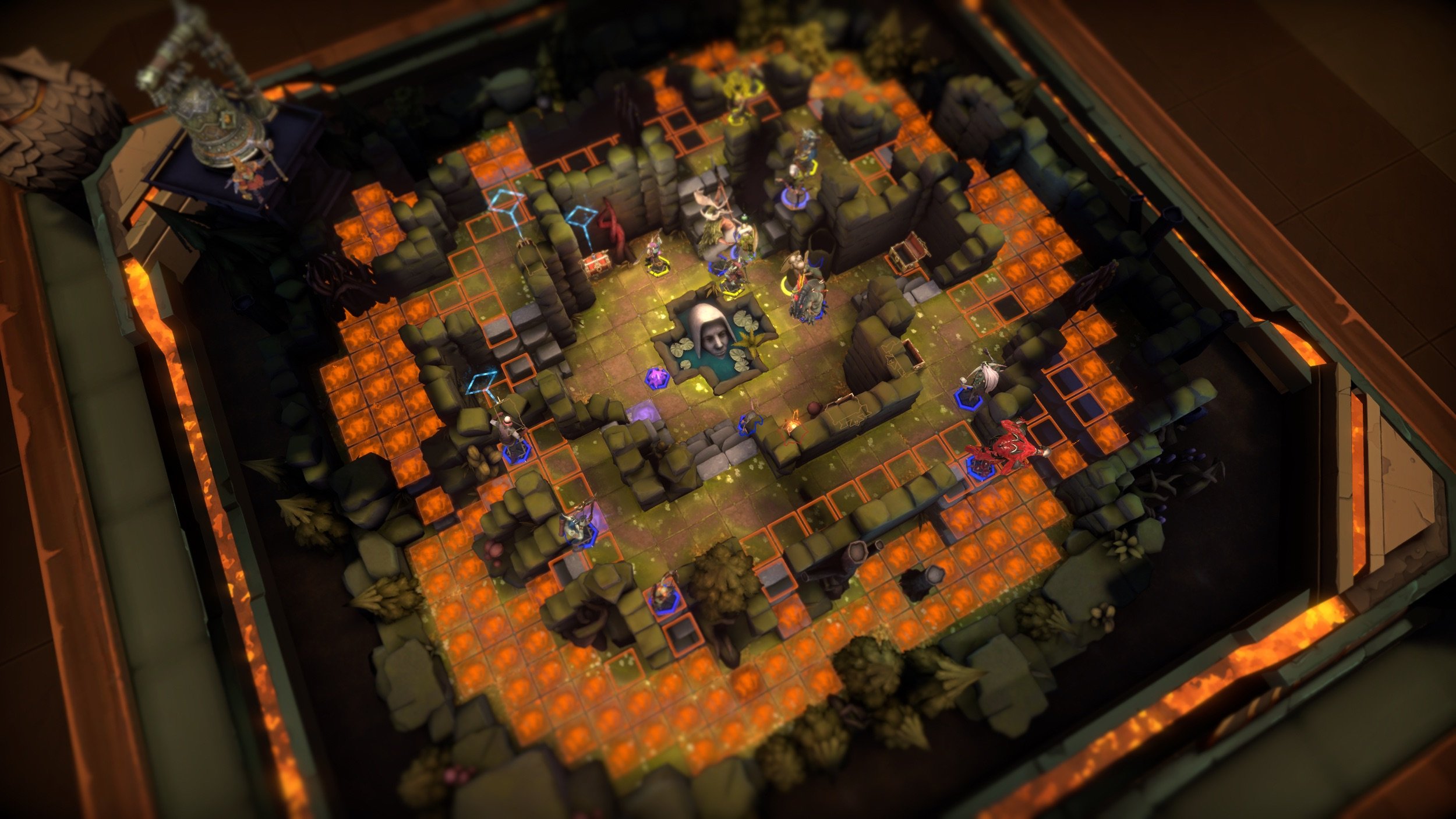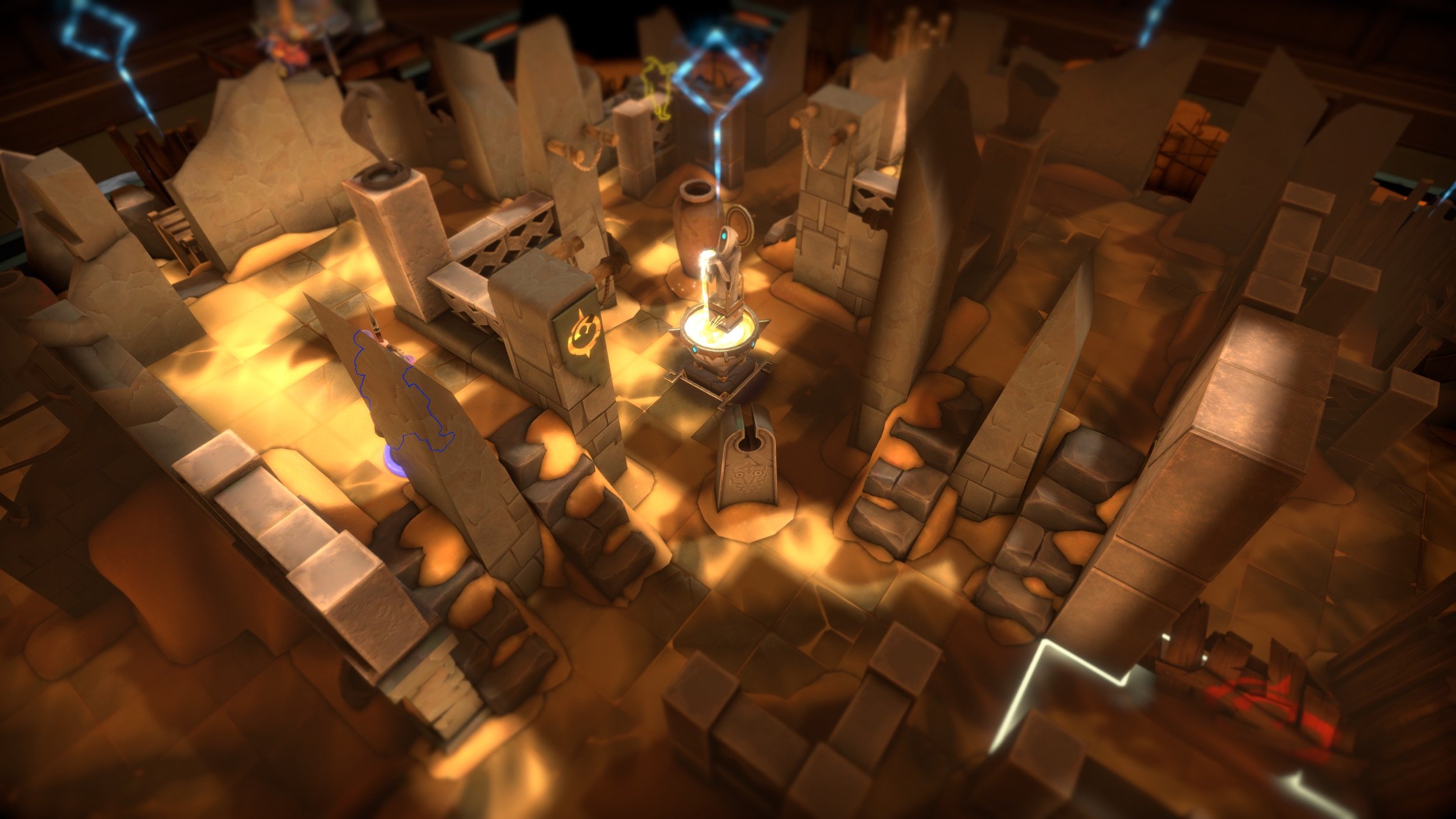How We Approached Map-Making in Demeo Battles
Demeo, the first game in the Demeo Action Role-Playing System, introduced players to five distinct environments to explore: from the dangerous depths of the Elven Necropolis to the sewers under Sunderhaven, the druid-filled Drych Forest, the sun-scorched Ronth Desert, and the tainted town of Ends.
Players of Demeo Battles will see these familiar settings once again, but in an all-new light and designed for an all-new style of play.
Rethinking the Game Board
As a competitive experience, Demeo Battles couldn’t be more different from its predecessor — and because of this, neither could its maps. Gone are the sprawling environments that task players to explore every nook and cranny of each dungeon in search of secrets. Instead, Demeo Battles offers smaller maps, full of strategic positions, with players vying for an advantage against the opposing team.
Each map in Demeo Battles is largely symmetrical, ensuring balanced play. Starting areas give both players equal footing, while The Burn (an ever-encroaching flow of lava) surrounds the players and pushes them closer together, until it covers everything!
In short, the only thing to set you apart from your competitor is how you play.
Flipping the Script on Surprise
In Demeo, the element of surprise came from the environment. You never knew what was going to be behind that next door, or just how many monsters you’d have trailing you as you grabbed a key and rushed towards the exit. And while that works great for a collaborative adventure, an unexpected environment doesn’t do players any favors when they’re working towards building their skills in competitive play.
Demeo Battles instead offers maps that players can memorize every tile of — and the element of surprise comes from the competition! With a variety of heroes, monsters, and abilities to choose from at the start of each match, you never know what you’ll be going up against. And neither does your opponent.
Get Over Here!
To keep the action moving quickly with plenty of head-to-head encounters, you’ll find a number of elements in each map that drive players to frequent encounters — the most obvious of which is The Burn.
Delivered into the gamefield by massive statues whose cups runneth over with lava, The Burn works its way towards the center of the board and causes immense damage to any player or monster that finds itself caught in its path. Careful positioning is core to the Battles experience, as you’ll want to stay at least a turn or two ahead of the creeping hot death. Or maybe you’ll want to risk it to open a chest, or activate a healing fountain, and hope that you can make it back in time?
It’s worth noting that tools that can help block a pathway (like barricades, or the Sorcerer’s Magic Wall) can play a far more tactical role in Demeo Battles. If your opponent is the one daring it all to open that chest near The Burn, can you play a card that blocks their path back?
Beyond The Burn, those chests and healing fountains help to bring players together too. Securing new cards and keeping your team at full health can be as tempting as a Siren’s Song, when it turns out your opponent had the very same idea and manages to spot you first.
Expanding a Familiar World
While there are some huge fundamental differences in how we’ve approached level design in Demeo Battles, there are elements of each environment that go beyond the cosmetic that should be familiar to Demeo players, and help to reinforce that this takes place in the same shared universe. Sure the Ronth Desert is sun-bleached and sandy — but its maps also feature significant height differences, just like you’d find in the Demeo adventure Curse of the Serpent Lord. The Elven Necropolis, by contrast, will lean more into the room-based style that players who’ve dared to explore have come to expect.
While the final number hasn’t been decided on yet, we’re looking at including upwards of 10 unique maps in Demeo Battles at launch — and we’re looking forward to seeing which ones become player favorites!




